Field Test: Transition Spur - Made to Descend
PINKBIKE FIELD TEST
Transition Spur X01
Words by Mike Levy, photography by Margus Riga
Transition Spur X01
Words by Mike Levy, photography by Margus Riga
The all-new Spur is a 29er with 120mm of front and rear travel, which, if you've been paying attention, you'll know is not exactly an uncommon formula for fun these days. While it's designed to cover ground quickly and even be built up into a relatively light bike, Transition also says that it's ready to “descend anything you may encounter along the way.’’
Rather than using a race-focused frame with a bump in travel as a starting point, something Transition doesn't have in their lineup anyway, the carbon fiber Spur was intended for more serious terrain from the get-go. With that target in mind, it sports some relatively long and relaxed geometry for a bike with just 120mm of squish, especially compared to some of the other options at our cross-country Field Test.
Spur X01 Details
• Travel: 120mm rear / 120mm fork
• Carbon frame
• Wheel size: 29"
• Head Angle: 66°
• Seat Tube Angle: 75.9° (effective)
• Reach: 480mm (size L)
• Chainstay length: 435mm
• Sizes: XS, S, M, L (tested), XL
• Weight: 24.74lb / 11.22kg
• Price: $5,999 USD
• www.transitionbikes.com
• Travel: 120mm rear / 120mm fork
• Carbon frame
• Wheel size: 29"
• Head Angle: 66°
• Seat Tube Angle: 75.9° (effective)
• Reach: 480mm (size L)
• Chainstay length: 435mm
• Sizes: XS, S, M, L (tested), XL
• Weight: 24.74lb / 11.22kg
• Price: $5,999 USD
• www.transitionbikes.com
With burlier riding in mind, the 2,500-gram frame is also heavier than those bikes, but the 24.74lb weight isn't half bad given its intentions and build; this is a $5,999 USD bike, not one with another digit on the price tag.
Transition certainly has the most extreme geometry numbers of the bunch, with a 66-degree head angle and a roomy 480mm reach for my large-sized test bike. Remember, because the Spur doesn't have to pull double-duty and also be someone's race rig, Transition could take a much more aggressive approach with its geometry. There's also a 75.9-degree seat angle that helps to hide the long front center during seated climbing, and all sizes get a 435mm rear end.
The Spur is a straightforward looking bike, with the SIDLuxe shock compressed from above via a carbon fiber rocker link. There's no pivot to be found at the axle, either, as Transition skipped using sealed bearings and the required hardware in favor of engineered flex in the carbon fiber stays. Other details include a threaded bottom bracket shell and a headtube that accepts press-in cups, which means Spur owners could install an angle-adjusting headset if they want to tweak the handling. There's also loads of room inside the front triangle for a single large bottle, and a set of threaded bosses on the underside of the toptube for you to attach a tool kit of some kind.
Other details: Cable routing is internal and tube-in-tube (as it should be) to make repairs easy, and the rubber chainstay protection sits nearly flush with the frame and sure looks classy.
Climbing
The Spur wasn't made to dominate the climbs, but that doesn't mean it's allowed to feel like you're sitting on the backseat of a tandem by yourself while steering it through roots and rocks. Thankfully, it's nowhere near that bad on the way up, but there's also no hiding the Spur's length and angles when the trail gets tight. It was a soggy test period, which probably highlighted some of its shortcomings on the really tricky stuff, and back-to-back testing up the same climb in the same conditions revealed that the Spur requires a different approach than the Scalpel SE1 or Yeti SB115. While you can do more on-the-spot thinking when pointing those two bikes up a tangled mess of roots, the Spur responds best to more deliberate (AKA the easiest) line choice.
One of the trickier spots was a tight left-hander with some rocks perfectly placed to grab the wheels, followed by a right turn that folded in on itself to be impossibly tight. And of course, there were some roots and rocks in it because the trail wanted me to dab. Which is precisely what I did every time I went through on the Spur, while I eventually did clean it on all of my other test bikes. But hey, if you're considering a Spur, you likely care much more about what happens on the way down than a single, mega-tricky uphill corner. And if your climbs aren't tricky, then I guess none of the above matters.
But you know what's not technical? A gravel road climb, which the Spur doesn't mind at all. I never once reached down for the SIDLuxe's pedal-assist switch, with the bike feeling just as speedy as the lighter weight machines it went up against.
It's probably best to break it down like this: If you're the kind of rider who's happy to re-do a section of the climb to get through dab-free, or you want a bike to do a bunch of competitive racing aboard, you probably won't be a fan of the Spur's climbing abilities. But if that sounds like a terrible ride to you, and you'd rather just get to the top so you can have fun on the way back down, then the Spur might be your pony.
Descending
It's usually not a good sign when your first lap on a new bike includes getting tossed over the handlebar to a near-perfect, 9/10 faceplant into the ferns. I had let the long front-end get away from me on a fast, loose corner, but then it caught and, well, a high-side while wearing barely-there skin-tight stretchies never feels like it's going to end well. But it only got better after that mouthful of dirt and leaves. I had been dilly-dallying, going half-speed since it was my first time on the bike, and without enough weight over it, the front tire lost bite.
That's not how to ride the Spur.
It's when you stop riding the Spur like it has only 120mm of travel that it becomes obvious that it's more capable than the others. Do the same on the Scalpel or SB115 and you'll end up in the ferns while the Spur holds its line around the same corner; it offers traction and stability that's just not in-line with what you'd expect, and despite the light-duty Schwalbe rubber I installed.
It's usually not a good sign when your first lap on a new bike includes getting tossed over the handlebar to a near-perfect, 9/10 faceplant into the ferns. I had let the long front-end get away from me on a fast, loose corner, but then it caught and, well, a high-side while wearing barely-there skin-tight stretchies never feels like it's going to end well. But it only got better after that mouthful of dirt and leaves. I had been dilly-dallying, going half-speed since it was my first time on the bike, and without enough weight over it, the front tire lost bite.
That's not how to ride the Spur.
It's when you stop riding the Spur like it has only 120mm of travel that it becomes obvious that it's more capable than the others. Do the same on the Scalpel or SB115 and you'll end up in the ferns while the Spur holds its line around the same corner; it offers traction and stability that's just not in-line with what you'd expect, and despite the light-duty Schwalbe rubber I installed.
Timed Testing
Our timed lap for the trail bikes was just shy of 20 minutes long and split into three sections. First, we powered up a smooth section of switchbacks before starting up a more technical, twisty section of trail that tested the bike's slow-speed handling and traction with tired legs. After that, we evaluated how the bikes maintained speed on a short bumpy traverse before the main descent, comprising of a small rock roll before a series of rough, suspension-testing corners and straightaways. Nothing too rowdy, but representative of the terrain the trails these modern cross-country bikes were intended to see.
Don't forget that timing is just one of many ways to judge a bike, and fast doesn't always mean it's the best for everyone.
Mike Levy: "The Spur had the third-quickest overall lap time, but it was just 1.85-percent behind the winner. Speaking of winning, I set my quickest descent time while on the Spur, with the Revel Ranger only 1.13-percent back."
It's as if the Spur delays what's coming at you in a Matrix-y way, but instead of dodging bullets in slow-mo while wearing cheesy gas station shades and a suit, you're eyeing up giggle-gaps and all the inside lines. Spandex suit not recommended, by the way. That surefootedness means you don't have to tippy-toe through fast, rough corners as you might on a more traditional bike.
Of course, the Scalpel and SB115 comparisons aren't really fair given their more well-rounded take on how to do it. Besides, those two are probably for a different type of rider than someone who'd prefer the Spur. The Ranger and Epic EVO make better rivals, but the three are still quite different. The EVO-fied Epic is easily the most versatile option, and while it's incredibly capable on the descents, I never got quite the same level of calmness from it when things were really rough and hectic. The Revel Ranger is up there as well, with all three letting you ride in a way that used to be reserved for bikes with an additional 30mm of travel. But it's the Spur that I felt the most comfortable aboard, and the clock agreed with me - I consistently set my quickest descent times when on the matte grey Transition.
Most of the bike's capabilities come from its geometry, but it wouldn't work at all if its suspension wasn't up for it. The SID Ultimate is kinda like a pint-sized Pike, and they've squeezed an impressive amount of suppleness, support, and bottom-out resistance into just 120mm of rear-wheel travel. That said, the fork did develop some noticeable bushing play; RockShox says that they'll look after anyone's SID that does the same.
In case it wasn’t obvious already, the Spur isn't your normal cross-country bike and it’s not for racers. Instead, it's a short-travel bike for riders who don’t care that they have a short amount of travel, and for those who love the responsiveness of a 120mm bike but don't want to be held back by it on the descents.
Pros
+ Made to descend, and it shows.
+ Suspension performance to back up the handling.
Cons
- There are better climbers and more well-rounded bikes in this category.
- I guess you can sell your trail bike?
The 2020 Pinkbike Field Test was made possible with clothing, protection, and support from Giro. Control tires provided by Schwalbe, and power meters provided by SRM. Filming took place at The Backyard pub in Squamish.
Photos: Margus Riga
Video: Jason Lucas, Cole Nelson, Max Barron
Author Info:
Must Read This Week
[UPDATED] Final Elite XC Results & Overall Standings from the Mairiporã XC World Cup 2024
42155 views
42155 views
Sign Up for the Pinkbike Newsletter - All the Biggest, Most Interesting Stories in your Inbox
PB Newsletter Signup

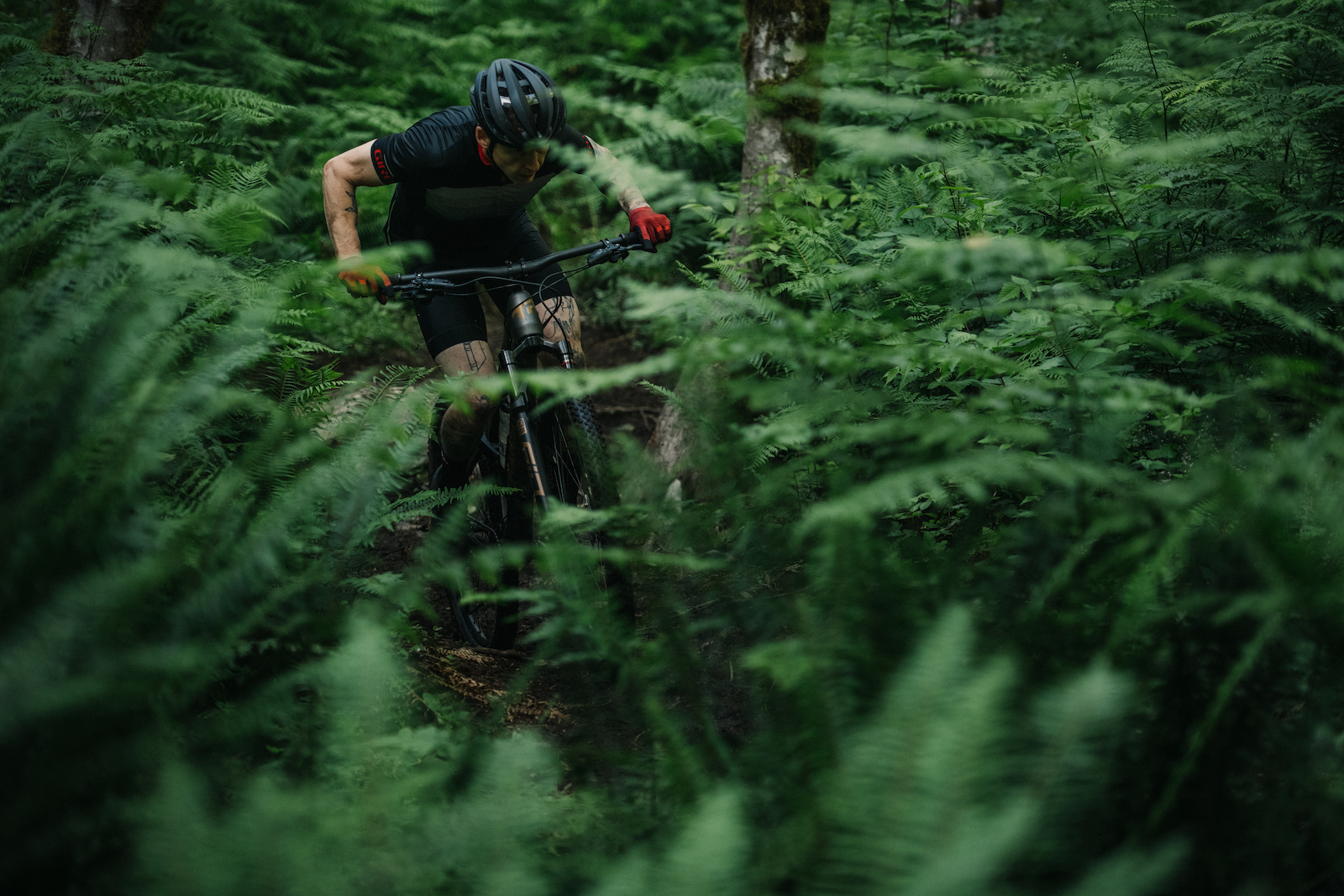
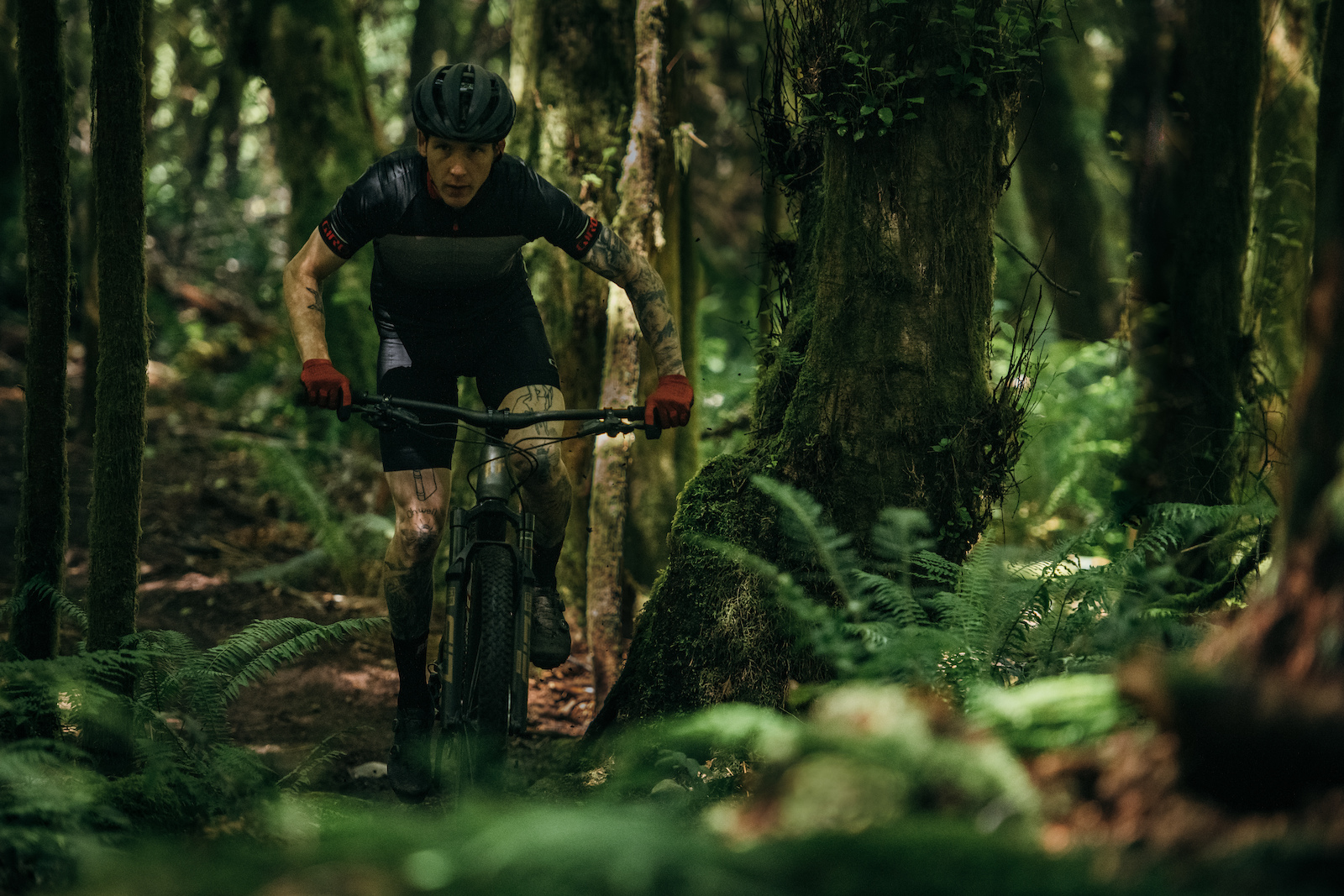
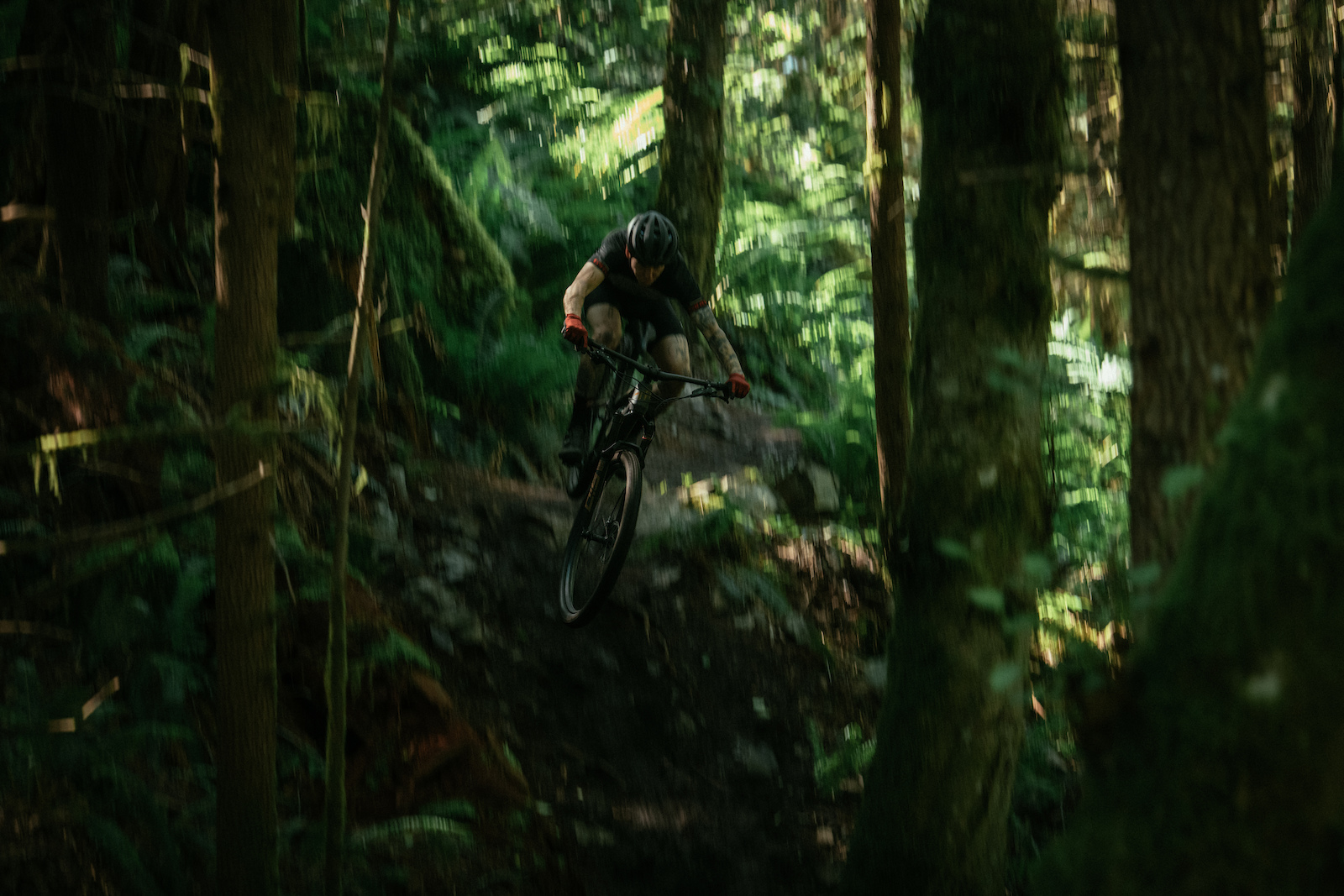
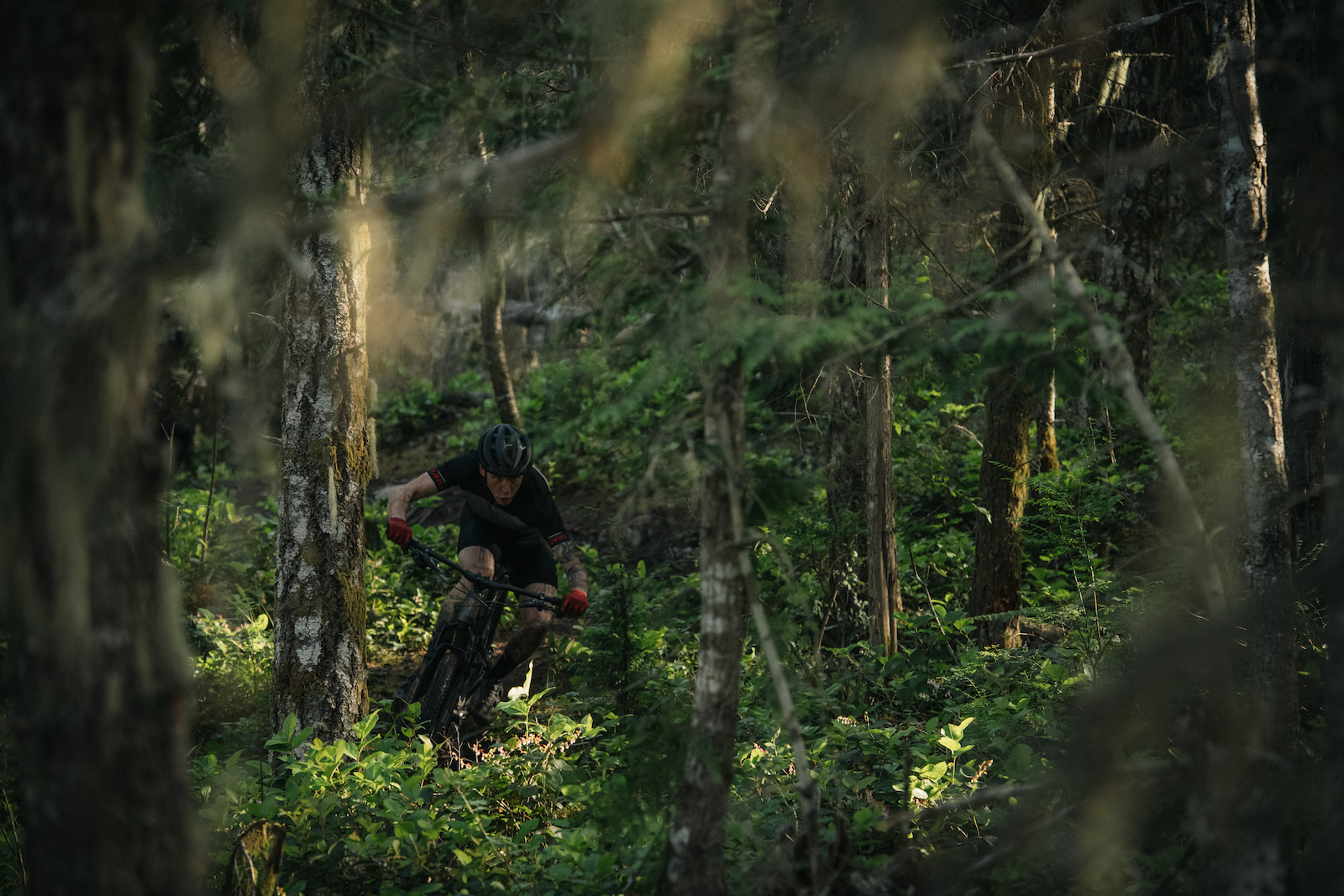
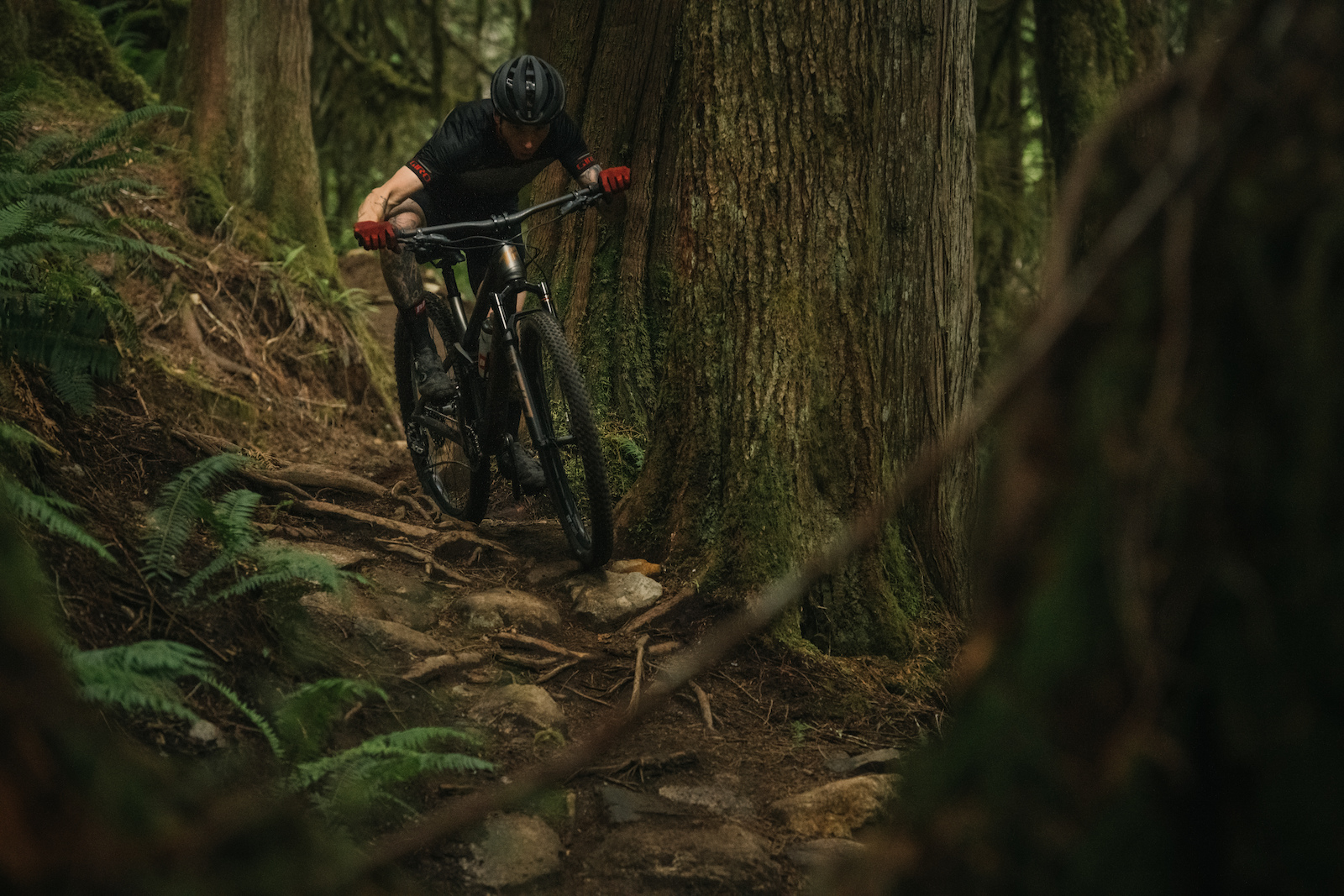
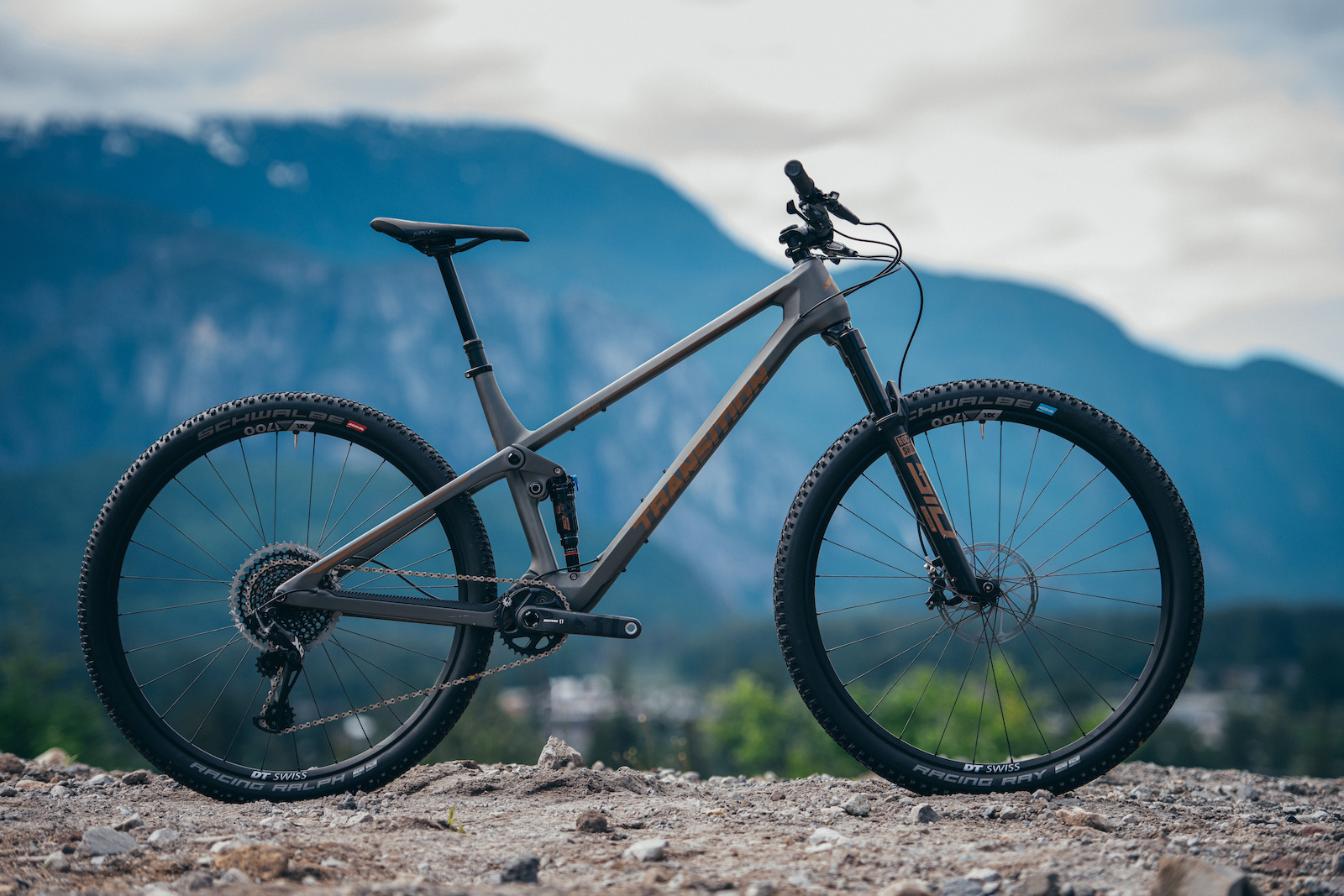

 Member since Oct 18, 2005
Member since Oct 18, 2005
I'm 5' 9.5" and recently picked up the Spur in a size medium. With the seat moved backwards on its rails, the fit seems just about perfect for me in both the climbs and descents. I even reached out to Transition directly and they agreed the medium was probably the better choice for my height and desire to launch it off of every little jump on the trails.
At 5' 9.5" and 5' 10", you and I are always in that weird middle ground for sizing.
With that in mind, a couple of quick questions: do you think any of the climbing issues you had with your size Large could have been resolved by you simply downsizing to a medium? What made you go with the size Large instead?
Thank you again for the awesome field tests!
@Shred-BC: I'd love an alloy one too, but Transition has dropped aluminium frames from their whole lineup, so not going to happen.
Otherwise I am having a great day: I rode this morning, IT is giving me a new laptop today, nobody I know has Covid....life is good.
Your dentist comment was cute, but yetis are so passe. All the hip dentists are on transitions these days.
*Sorry had to be done
Ok, so to compare the Pivot to the Spur. Let's start with the Pivot's Pros: DW-Link, check. More relaxed and easy-going Geo, check. More planted and stable feeling than Spur, check. More robust feeling frame (heavier layup), check. Very secure and super high amounts of grip, check. Cons: Heavy. Not nearly as poppy as Spur. Heavy. Proprietary rear end. Heavy(!) -- seriously, you really do feel the heft of the Trail 429, but the suspension design can almost fool you into thinking its a lot lighter than it really is. --- Ok, now onto the Spur. Spur is very, obviously, clearly lighter. You feel it in the ride. Its flickable, sporty, poppy and playful. It's like you took a Ripley and gave it a couple beers.. lol.. Both are absolutely fantastic, but approach the game from different angles. Both are amazing. If you've never ridden a DW-Link bike before, you owe it to yourself. If you come away from that thinking "Ok, but I don't get all the fuss" then you know where you're headed..
Oh, I know how to describe it.. The Trail 429 is like a bike that stepped up to the plate and cracked a homerun using power and force, then confidently strode around the bases back to home. The Spur showed up to the plate, hit the ball so hard it cracked the bat in two, made it to 2nd base, then stole 3rd on the next pitch with a huge grin on it's face. Yup, that about sums it up.
Thanks for the comparison. Feel free to throw in the Tallboy as well... provided you’re talking about the new one.
Alright.. SC Tallboy.. the one I rode was newest gen in Stormbringer Purple, and I rode it at Alderfer / 3 Sisters for two days straight. On it's own, I think the Tallboy is a really good bike. Much better than the previous one, zero doubt on that. The first thing that strikes me about the Tallboy is it's VPP suspension design. It's a unique suspension platform that is probably the most velvety and active suspension that I've ridden (Tallboy/Hightower/Megatower), yet somehow still can be poppy and fun. That is a really unique trait for a bike to have, and I can see why Santa Cruz has endeared themselves to so many people. The frame itself also has this really solid and robust feel to it. Not quite to Pivot standards of robustness (no superboost rear triangle) but still very, very solid and confidence inspiring. The Tallboy steered fine, no major pros or cons there, just straight down the middle. The rear end felt fine as well, no major pros or cons there either.
So with all that said, I personally didn't end up with one because I place a *really* high emphasis on pedaling efficiency, and this is an area were no VPP bike really shines. It's not a major knock against SC or these bikes, it's just a fact said in comparison to other bikes that place an emphasis on that aspect. I'm a climber, not a descender (if that helps put clarity to my comment) and its because that suspension platform is so extremely active. I'll be my own devil's advocate here and say that there's basically no better bike (SC) to use a rear lockout with. It basically means the Tallboy (and Hightower, which is very similar, just with more travel) are like transformers, especially if you have a 3 position rear shock (and don't have to go all the way locked out on a climb). So yeah, expect a SC bike to be a lot more active and plush than just about any other bike I can think of. It's not a bad thing, its just a trait unique to them, and something that SC engineers into the bike. SC bike are really comfortable too, I'l give them that for sure..
Comparing Tallboy to Spur? Hm.. both are on the active side of suspension designs, but the Tallboy is more plush and squish-happy. The Tallboy is quicker to use its travel and more comfortable doing so.The Tallboy is more "Trail" while the Spur is more "XC/Trail" if that makes sense. Also, you have to throw a lot of money at a Tallboy to get it down in weight vs Spur. Tallboy does feel more robust on the down. Spur is more flickable, and quick to dart around, changing directions and whatnot. The Tallboy is probably a *little bit* more poppy than the Spur.. Hm, what else.. I mean the biggest thing between these two is probably the pedaling efficiency of the Spur and the plushness-while-still-being-poppy nature of Tallboy's VPP design.
There's no loser between these two bikes. Both are world class, they just take different directions into the scene. If you looked at each bike, then looked at where it's made, it makes a lot of sense. The environments of those two regions are reflected in their designs. Hope that helps, let me know if you have any more specific questions and I'll try to address them!
Yes that's helpful, and about what I'd expect. I demoed the new Hightower and thought it's at the top of the class for a 140/150 bike in the descending department but back of the pack in climbing. I think it's just the reality of that platform. The Tallboy seems like about the most shreddy bike in it's class (maybe with the Trail Pistol) meaning descending chops for a 120 rear. Still need to arrange a demo as I sometimes wonder if it could replace my longer travel bike if it's upforked to 140. The Spur looks rad as second bike for sure. I wouldn't try to make it the one and only.
Is having both overkill?
You still got the Maxxis Dissector up front?
I will use the Spur to build fitness on longer rides and also use on UK trail centres ( groomed) to make the more boring trails more fun.
Have you found limits to the Spur?
That extra $3000 is well past diminishing returns, but its awesome tech.
"Why not get a longer travel bike" is a fair question to ask about the Smuggler (which I have and love) when it's only 1-2 lbs lighter than the Sentinel. But 6lbs is a huge difference.
I personally think there's still room for a middle-ground Smuggler-on-a-diet in the future, that falls between the Spur and Sentinel, but for now there's a big difference between the 26.9 lb GX Spur and 31.3 lb GX Sentinel.
Maybe the only difference I notice is with the XC bike I'll get going faster and make poorer line choices. The lightweight bike + a good quarentine training schedule gives me dreams of KOMs half the time. Pushing up a steep pitch into a rock garden invites some line choice mistakes at 175bpm. Grannying it on my Enduro means I go into the rocks at 1/3 speed and remember to stay left.
I also think greater fitness gains will be made by riding further and higher on a lighter bike , than on a longer travel bike
I'm running a power meter on all my bikes so I know what my training load is. Examples of my last big rides on my roadie, XC, and enduro (respectively):
100 miles, 4000', 2700 kilojoules
76 miles, 10k', 3200 kilojoules
62 miles, 10k', 4000 kilojoules
So my hardest effort ride was on my heaviest bike. I enjoy that bike the most, so I put in more effort on that bike. But if the lighter bike is more enjoyable for you, than yes, it will have a better training effect if you ride it more.
Where are the 120-140mm travel aggro trail bikes (downcountry) that weigh in the 26-28 pound range?
I really dig this bike but that is the problem I see, it's like a fully capable trail/ endure bike, with not enough suspension underneath it.
Almost have to keep the XC tires (or very light trail tires) to keep it in check it would seem.
Also, Yeti now offers a lifetime warranty on those new frames...Devinci is a Canadian brand that offered a lifetime-ish warranty for many years (no idea if they still do) and their frames were always a bit heavier/overbuilt as well. So it makes me wonder if a combination of the two is the big factor here.
As I recall Levy coined the term on the original SB100 review.
In my mind, the first downcountry bike presented by one of the major players was Yeti's ASR. It had 120 mm fork, slack (for the period standards) HA, short offset fork, and an ability to run dropper.
My Ripley V4 XL is at 11,75kg / 25.9lbs with XC tyres, MT5 brakes, light wheelset, without pedals. Size XL/500mm reach, so an M would be lighter.
@CircusMaximus I assume the climbing ability is in comparison to the other bikes in the test. @mikelevy can you confirm? I think there’s plenty of room for a bike of XC weight that is downhill biased geometrically. Can’t wait to try it.
The good news is that it sounds like I can keep the stock Dissector in the front and only need to replace the rear Rekon that it came with.
That's... um... dangerous livin' right there.
I do wish to replace the Rekon in the rear, though. For that, both the Dissector and Forekaster options mentioned above are intriguing.
If I were to write a personal searching for a second bike; Ex Enduro racer, Ex-Ex Cross Country racer looking for a bike for long rides with enduro and xc buddies, last hour of daylight sprints, 6 hour long epics and everything in between but makes me not want my ebike on the climbs.
And the funny thing is that despite the real and statistical insignificance of those difference they keep claiming that one bike or more, or less, down-country, or more or less, one would guess, up-country? What sillyness
Course if you’re going to ride it like that all the time you should probably get a different bike, but nevertheless it is a nice option if you want the Spur as-is for most of your riding and still have the ability to tune it down for proper XC stuff
I sold a '19 carbon Patrol to buy the Optic two months ago. 100% of riding in and around Bellingham WA. The Optic feels as fast or faster on 99% of regularly ridden trails. It's a few pounds lighter (with exo+ Assegai/DHRII) and is a relatively sprited climber. Easier to manual.
Surprised to say comparing the Patrol and Optic is not a stretch so far as capability. I'd never compare the Patrol and Spur that way.
I used to downhill and dirtjump, but with work and all, I began to ride less and less. Now I'm looking into getting a bike to do everything basically, from riding to work to hitting some trails and the ocasional jump and that's what appeals me in the Spur, but it's way off my budget. The Izzo comp looks like a great alternative, but from the reviews it doesn't seem like something I can push as far, despite having 10mm more than the Spur and the numbers looking similar.
Tallboy, Ripley, Stumpy ST, Trance, Habit, Optic, where do these all fit now?
Sub 120mm = XC
120/130mm = Down Country/Light trail
130/140mm = Trail bikes
140/160mm = All mountain
160/170mm = Enduro
170/180mm = Freeride?
180/200mm = Downhill
I'd put the Tallboy solidly in "downcountry" (ugh, I still hate that word, Mike.), but the Spur.... isn't. And its not an XC bike. Its Slack-C. The Tallboy is also like 3 full pounds heavier than the Spur. Which is like 3 pounds heavier than the Epic EVO, also with similar geo.
I feel like bikes keep progressing before we can even categorize them, but id like to think this is as far spread as we could get? Jsut crazy what a difference there is between even such similar bikes on paper!
As more DC bikes hit the trails... others will see that they have been over or under biked and join the revolution as well!
AFAIK, the first bike that fits there was the Trail Pistol special edition thingy, followed immediately after by the Spur.
There are bikes that you can DC yourself of course… that's how it began. The Ripley could easily be DC'd… or the IZZO for example... maybe the Tallboy 4. Angled headsets are another innovation gaining momentum cuz of DC.
To be fair: I have a devinci Kobain with specs of 67 HA @ 130mm travel. I over forked it to a 160mm lyrik and use it for literally all my enduro riding because it's fun. I can ride it hard but the rear end chatter is exhausting. 130mm was almost not enough for that kind of stuff.
Wouldn't people want to ride this bike so hard that there should be a fox 34 or something? I have 0 knowledge of XC suspension so excuse my ignorance if it comes across as dumb. It just seems to me like trying to spec what could be an agressive trail bike with a light XC build?
I guess how it compares to a burlier fork is what I'm asking (i'm 210lbs and 6'4" so I worry about these things
However if you intend to go a bit bigger from time to time, you probably need a burlier bike overall.
If you're a more aggressive rider that goes bigger at times, this bike for it's geo/ weight/ efficiency/ and gorgeous looks is really appealing and besides, some of those really rad dudes ride the same trails with no suspension or gears at all so how hard can it be? But I think once that more aggressive rider adds grippy tires and tries to ride this bike like their Enduro sled, shortcomings are going to become apparent and then if they continue to beef it up, they lose what it really is.
Riders need to be realistic about what this class of bike is, is all I'm saying.
Which is part of what makes the Spur so interesting. If you start to overfork it.. you're gonna want more brakes. and more rubber. and... and... and... you probably just bought the wrong bike?
Question for @smooresmoore: You rode all these bikes, how do you feel they stack up with the Trail Pistol, which was described much like the Spur was in that they started with a burly frame and went lighter?
I think this bike in particular and this Downcounty class of bikes hurts some egos a bit. It’s a check for guys who unnecessarily have big travel bikes for theIr trails.
This bike will kill it on virtually any local trails out there. It will be faster, more maneuverable, and just as capable as any trail bike on your local trails.
Hire a statistician, would you? All this is doing is reporting random variation ... expressed in % ... and then making up stories (down-country or up-country!) to fit the randomness of the results!
I can't really argue with that but maybe its okay, I mean they aren't trying to plot launch trajectory to land a man on Mars or anything, maybe we are all just having some fun here?
The thing that I feel isn't always addressed in PB reviews is how a certain suspension works for different surfaces, so for example I know about PNW riding cuz I lived there, but now I'm in the Eastern Sierras, so comparing how a suspension works on loam, roots, dust, versus rock, sand, and chunder.
I can pound my way through a gnarly scree slope or down a rocky drainage, over and over on the Pistola/Shred, but only because those bikes can absorb the repeated impacts without excessive deflection. For contrast, you can get away with riding a hardtail in the PNW or on the East Coast, but out here you'd get your arse handed to you unless you stick to flow.
Maybe try some thinner pedals you may get the same result as a shorter crank.
Or try 170 cranks and thinner pedals?
Pic's show the rear brake line is exposed?
Keep up the great work, especially having more XC or DC content!
-XC4life
It'll get reviewed soon.
@thegoodword: They really are different feeling. The numbers don't tell the story on this one =)
The Ryve 115 strikes me as the ideal climber for those short steep sections, whereas the Spur would slay the chunky downhill sections. Both bikes would likely do just fine for most of the trail ride. Finding the middle ground via the field tests is the challenge. I am almost reading that a more well-rounded bike like the Epic Evo would be more ideal. I really want a bike that I don't have to hike-a-bike the steep sections, yet don't feel like I am riding a hard tail on the descent.
It's a beautiful looking bike alright.
If you love climbing so much why not just buy an e-bike though?
Are you really considering an e-bike?
Would love the whippet-like physique and fitness needed to do one of these bikes justice.
I watched someone describe this bike a few weeks ago as the perfect bike for someone who thinks of themselves as wanting to go up and down with very high efficiency, but not giving up on being weight conscious. Honestly, it was a perfect description.
Another way to think about it is this: The Spur is a direct competitor to the Ripley / SB115 / Trail429 and a bunch of other bikes.. That's why marketing people try to think up a category for it and you get all those weird terms like Down-Country or like. It definitely falls into the not-a-typical-trail-bike-but-still-not-XC-either..
..and a third perspective might look like this. This is the bike category that a lot of people should probably be on, who usually end up over-biking themselves with more travel and weight than they will ever realistically need.
would have to try it to believe it doesn't flex too much
Ultimately you have have to judge if the bike is right for the riding you do, and the risks you take. These bikes work for a lot of people, who don't want or need the heft of an enduro bike, but want something more playful for more tame trails than an XC race bike.
Just because you don't see the bike as useful, doesn't make that the case. It was also Levy's favorite bike in the whole test.
The conversation point here, for me, which I was hoping he might be interested in talking about, is the fact that there has been an emerging trend of short travel aggressive geo bikes in recent years. Seems people really like them. Process 111, Smuggler...more from the likes of Banshee, and many others. Some moron even coined the term downcountry (kidding, Levy) for this emerging segment. And then of course the OP here just disagrees this segment should even exist - or at least that's what I glean - as apparently travel has to match geo - which I can only assume he means that only long travel bikes should be slack, long, low. Which I disagree with. And clears others do also, as he has landed below the line on his comment.
But hey, maybe I'm not allowed to voice my opinion? Or you are just not a fan of conversation? Or.....?
I'm going to need you to email me the comment section rule book! Clearly I am not straight laced enough to be here, and I need a lesson
Maybe I need a lesson in being respectfully sarcastic.
In all seriousness though, it's an honest question. If it's a recipe for disaster, how have we not arrived at this conclusion yet. This isn't exactly the first bike of its type. The Process 111 came out in 2014, and that's when 'down-country' was coined. Did Kona get it wrong? I mean people loved it. Same with the Smuggler. I don't recall seeing an increase in death or dismemberment with the advent of down-country...you? No...so I think he might be being an alarmist. I was going to tease it out of him, but you spoiled it! Totally thwarted my plans - with your policing of my sarcasm!
It was also pretty long for its time. But agree, not overly slack.
The 111 has less travel rear, same or a little more in front. Still, it definitely inspired shenanigans the same as the Tranny will, but probably attracted more bruisers as it was advertised as more Enduro than XC.
Same aggressive geo bike with small travel bucket. Some like them, some call them useless.
I owned the 111 for three seasons. I would have bought the Smuggler, if still available. More than happy to ride a Spur.
Ignorant comment. Internally guided adds weight and forces Brits and Aussies to run shit brake routing. That comment was nearly as dumb as the pro threaded BB comments that reviews on here often state on here that perpetuate the shite manufacturing tolerances of the bicycle industry.
With a 66 degree angle l?
DON'T THINK SO !
also, this is a 120 bike.
also, wasn't this tested in BC? certainly steeper than Santa Monica.